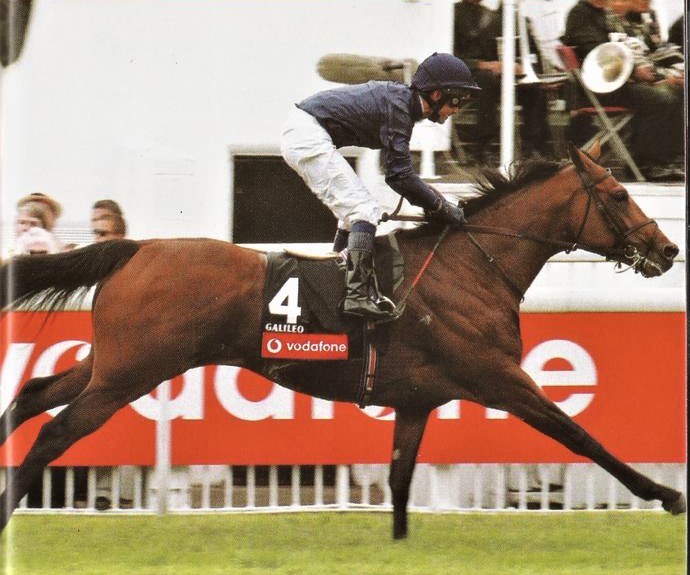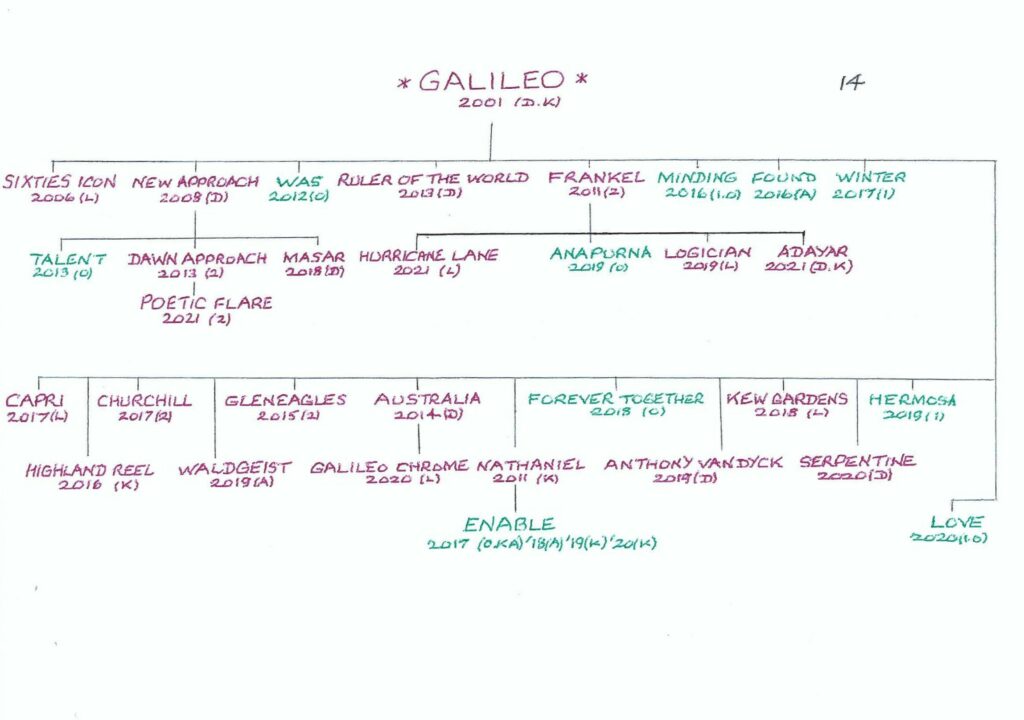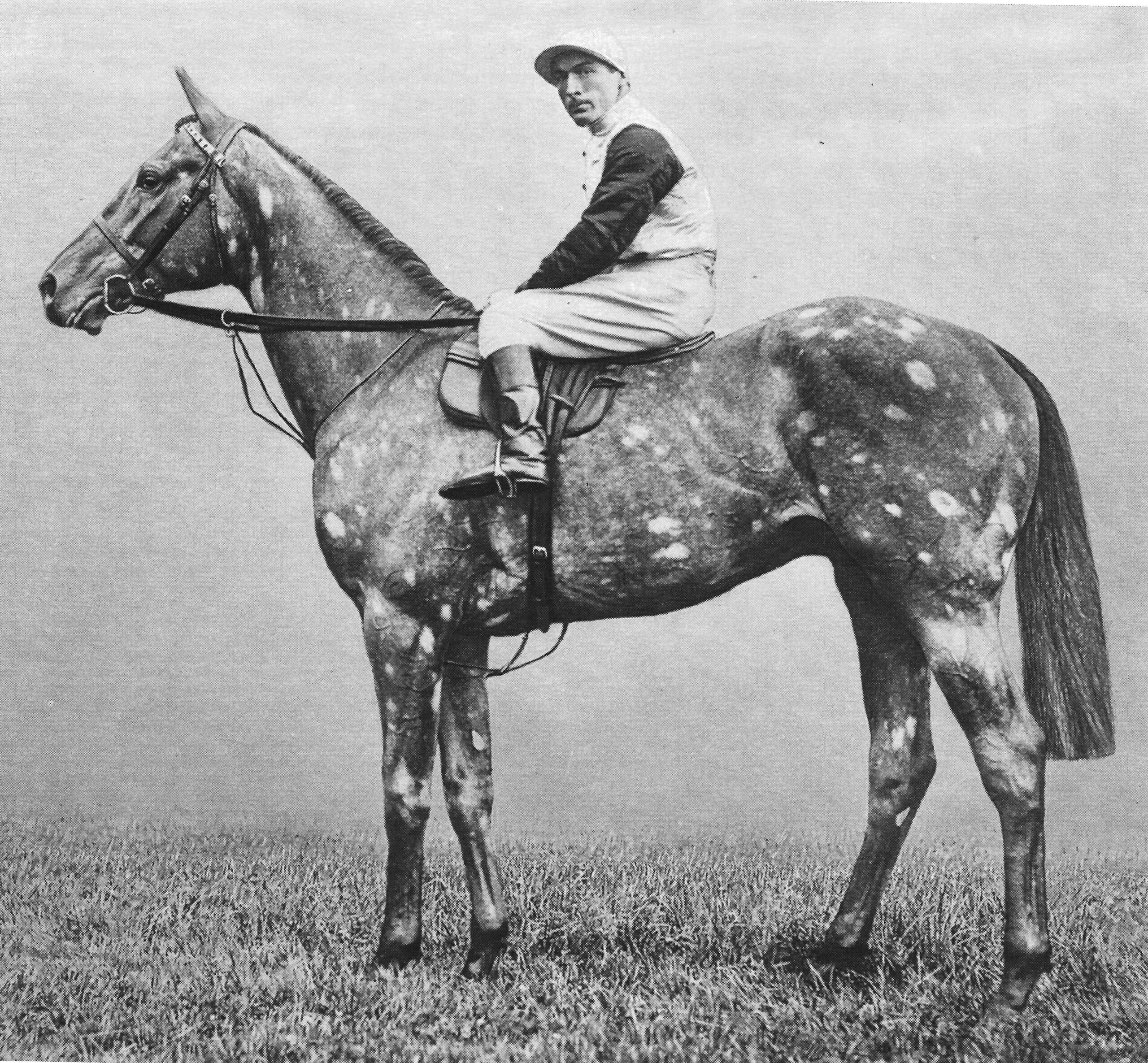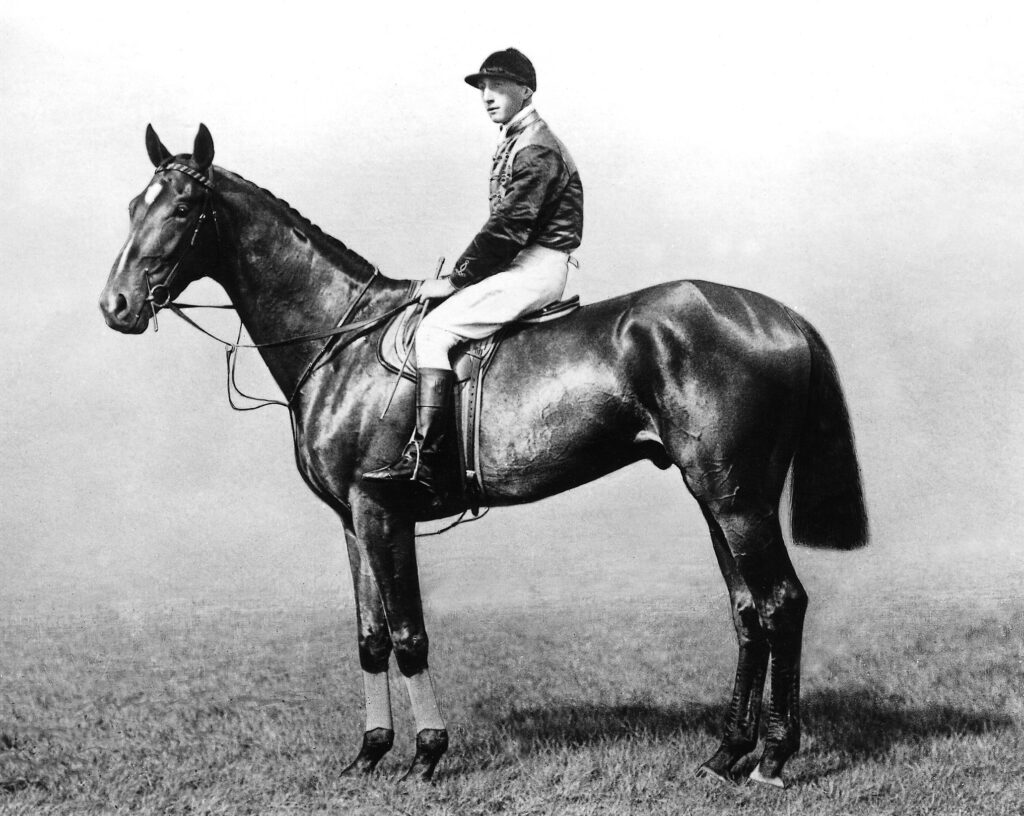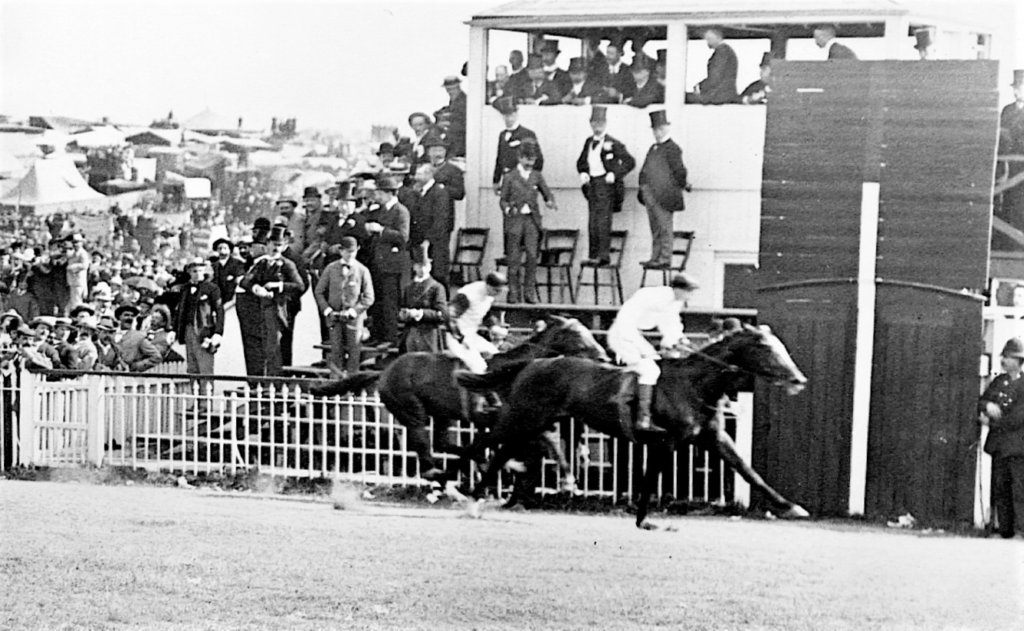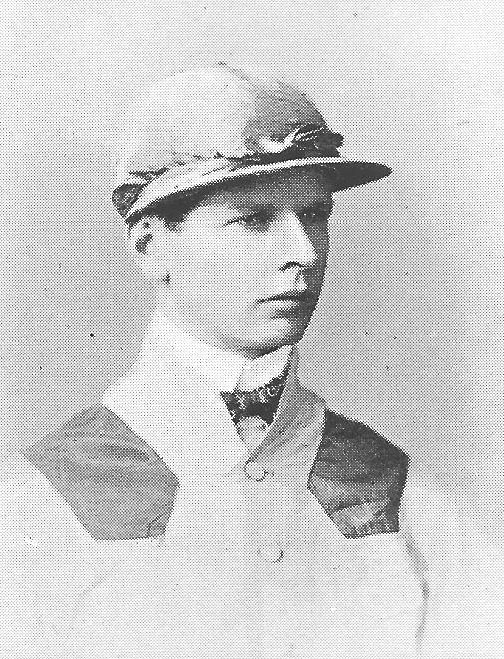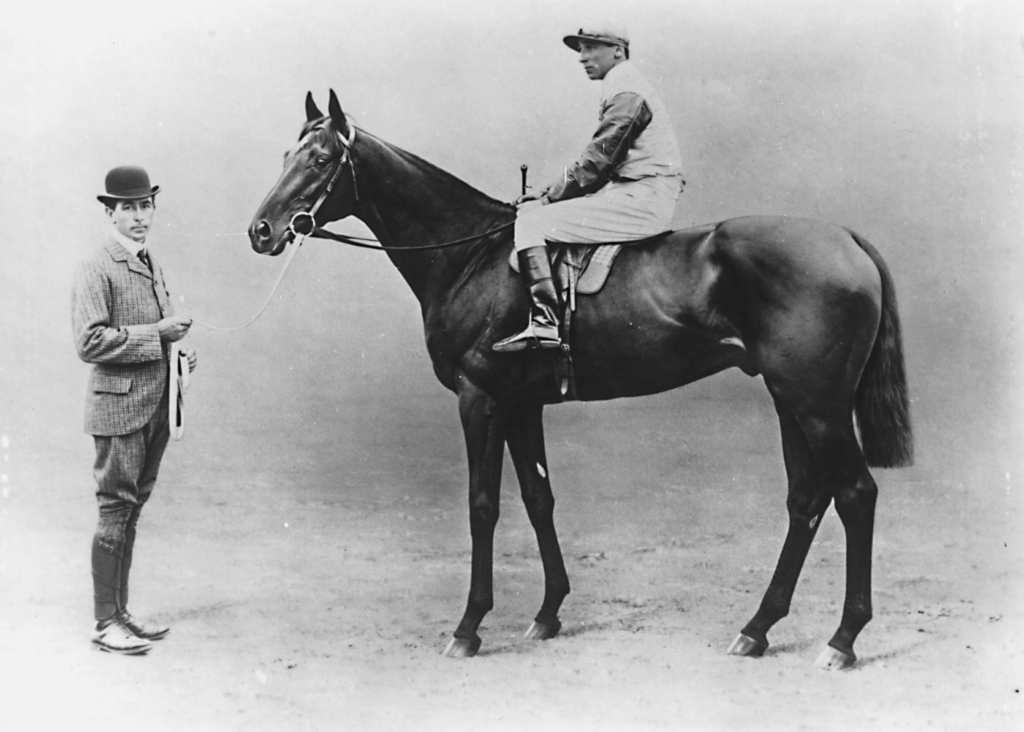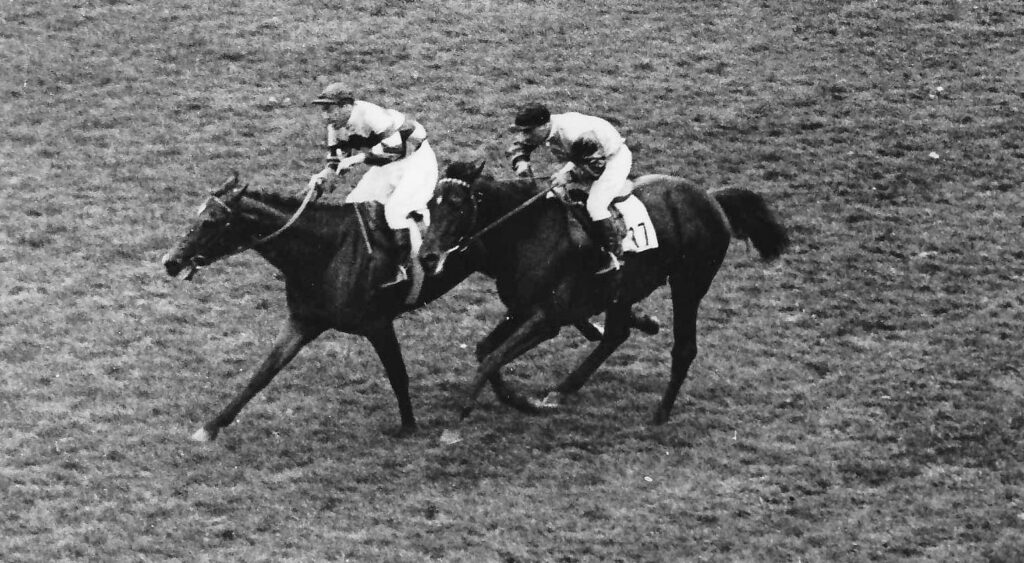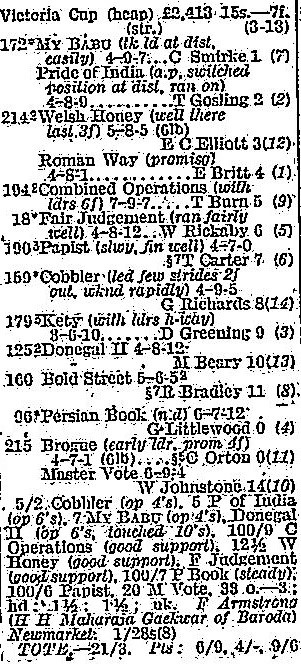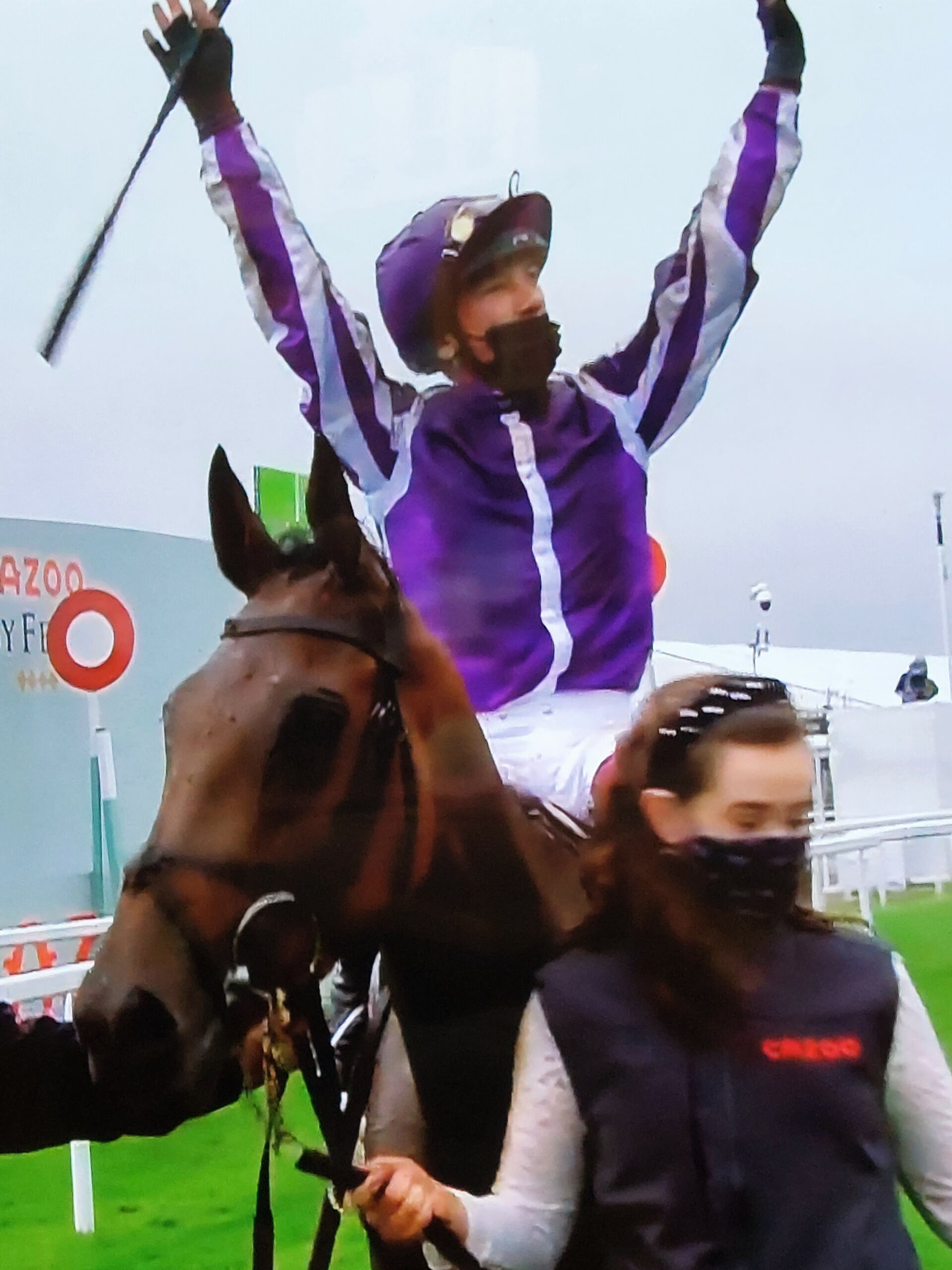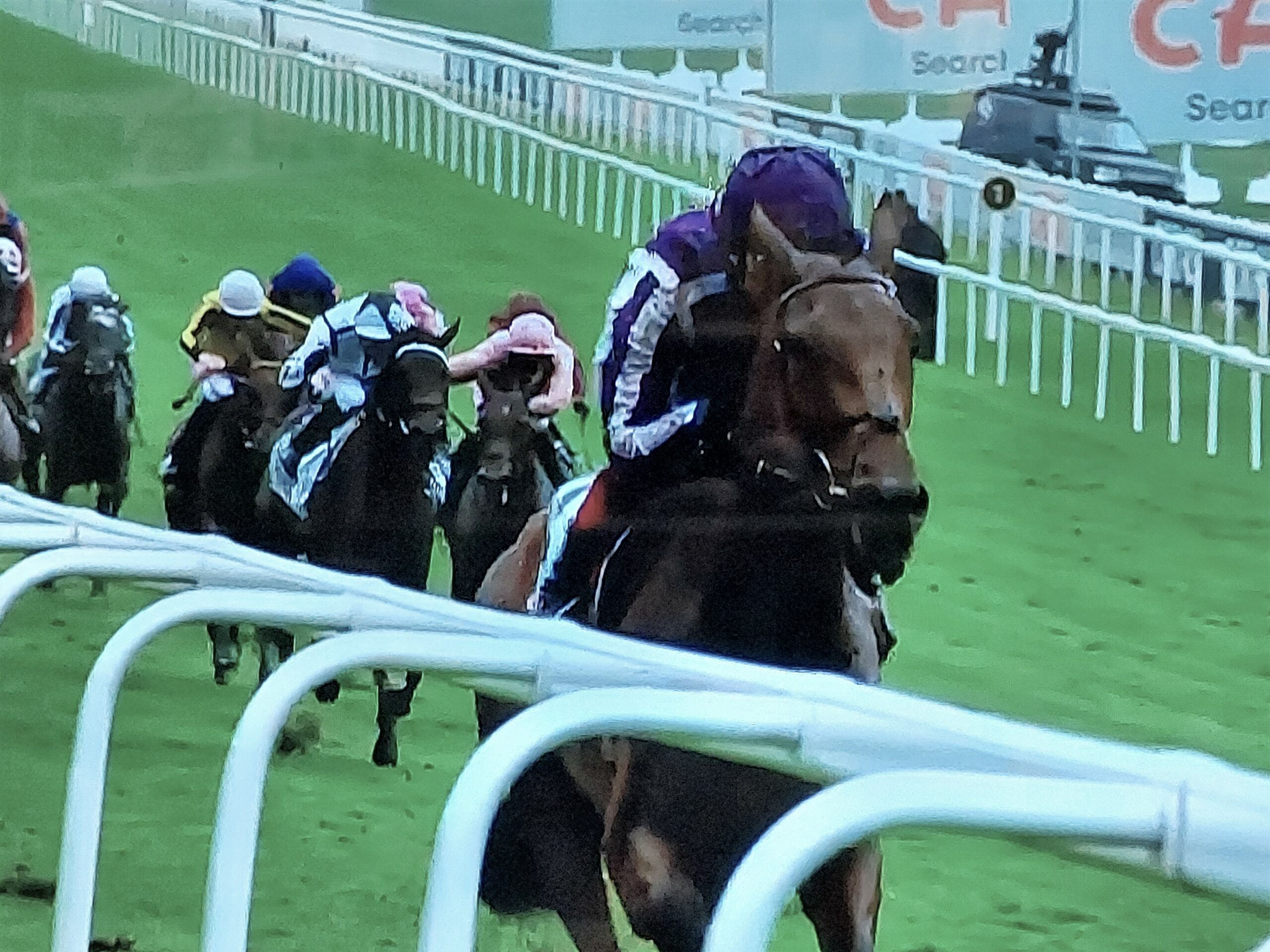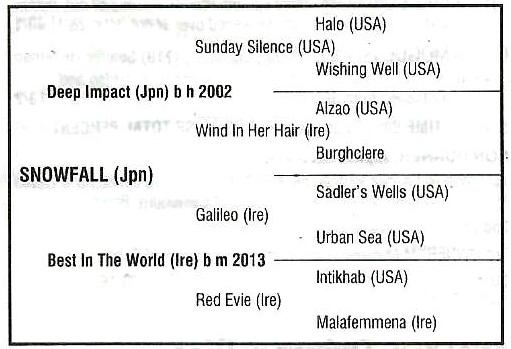At around 8.40, on Tuesday, 8 February, 1983, a time before electronic security gates and CCTV cameras, an armed gang of six or more men broke into the Aga Khan’s Ballymany Stud, near Newbridge, County Kildare. Three of them, masked and armed, forced their way into the house, bludgeoning down Bernard Fitzgerald at the front door and holding the family at gunpoint in the kitchen.
“We have come for Shergar. We want £2 million for him.”
Shergar’s groom, Jim Fitzgerald, father of Bernard, was then ordered to help load the stallion into their horsebox, while two further gunmen were detailed to guard the groom’s family. Shergar was then towed away and never seen again.
Meantime, Jim Fitzgerald was put into a car, driven around for three hours and on receiving the password for negotiations, was pushed out on to a quiet road a few miles from home. Strangely, it was eight hours before the Garda were informed of Shergar’s kidnapping, Fitzgerald later telling Chief Superintendent James Murray of the Newbridge Police that the gangsters always referred to each other as Cresswell!
That evening, the story was broadcast by Alistair Burnet on ITV’s News at Ten, explaining the repercussions within the Thoroughbred Industry. Shergar, whose value was assessed at £10 million, had previously been syndicated into 40 shares; 34 sold to investors at £250,000 each, with the remaining six shares held by the Aga Khan. In return, shareholders would hope to receive a foal each year.
The £2 million ransom demand, was on realisation of the multiple ownership, subsequently reduced to £40,000. However, the kidnappers received no payment and Shergar was never found. On 16 June, it was reported that the insurers, Lloyds of London, having received no further contact from the kidnappers, had agreed to pay £7 million to the owners’ syndicate, on the presumption that Shergar was dead.
For the record, Shergar, was a rich bay colt of 15 hands 3, with a white blaze and four white socks. Bred by his owner the Aga Khan, he was by Great Nephew (the sire of the 1975 Derby winner, Grundy), out of Sharmeen by Val de Loir.
Sent to trainer Michael Stoute at Newmarket, Shergar ran twice as a juvenile, winning the Kris Plate at Newbury on his debut and following up with a 2½ length second to Beldale Flutter in Doncaster’s Group 1 Futurity Stakes, after which 33-1 could be obtained about his chance in the Derby.
Reappearing in the spring, Shergar impressively won the Sandown Classic Trial by 10 lengths and the Chester Vase by 12 lengths. Meanwhile, a week before the Derby, his main rival, Beldale Flutter, was involved in a freak training accident on Newmarket Heath, falling heavily on a road, sustaining serious injuries to his knee and ribs, so causing his withdrawal from the Derby and sending Shergar’s odds tumbling to 10-11.
With the opposition now considerably weaker, Lester Piggott’s mount Shotgun (second to Beldale Flutter in the Mecca-Dante Stakes), became second favourite at 7-1. Others for small money were Kalaglow, winner of the Heath Stakes, and Glint of Gold, successful in the Warren Stakes at Epsom and the Derby Italiano.
On a hot, sunny Derby Day, with the police in shirt sleeves, 18 runners went to post on good-to-soft ground.
At the top of the hill Riberetto led from Silver Season with Shergar two lengths away third.
Entering the straight, Shergar joined the leaders and cruised into an unassailable lead.
At the two-furlong marker he was four lengths clear, a furlong later, the distance had doubled, until eventually eased down in the hands of 19-year-old Walter Swinburn, he won by 10 lengths – the greatest winning distance in the history of the race.
The placings were all but irrelevant, but for the record Glint of Gold finished second, two lengths ahead of Scintillating Air.
Strangely, the time, 2 min 44.21 sec., was the slowest since Airborne in 1946, which, may have been due to the ground, the quality of Shergar’ s opponents, the ease of his victory, or all three.
Shergar went on to win the Irish Derby by four lengths from Cut Above, and the King George VI and Queen Elizabeth Diamond Stakes by four lengths from Madam Gay. In the St Leger, however, he made no impression in the final quarter-mile and finished a disappointing fourth behind Cut Above and Glint of Gold.
Shergar did not run in the Prix de l’ Arc de Triomphe as planned and retired to stud forthwith. His first and only crop included Authaal, winner of the Irish St Leger, and Maysoon, placed in both the One Thousand Guineas and Oaks.
Further evidence in the Shergar kidnapping mystery came to light in a piece published by Racing Post on 20 May, 1998. It stated:
“Sean O‘Callaghan, a senior member of the Provisional IRA who later turned informer, backs up the findings of the security report commissioned by Shergar‘s owner the Aga Khan. O ‘Callaghan reveals the kidnap plot was hatched in prison by a former bookie‘s clerk and republican veteran, who was head of a special operations team set up to raise money for Sinn Fein and buy weapons for the IRA. ”
In published extracts from O’Callaghan’s book “The Informer”, he stated:
“Shergar was loaded into a horsebox and driven off towards north County Leitrim …The horse threw itself into a frenzy in the horsebox, damaging a leg and proving impossible for the team to control. He was killed within days, even though the IRA kept up the pretence he was alive. ”
Sadly, the kidnapping of Shergar is what most people are now left with, however, I would like to redress the balance with the memory of his record 10 length victory at Epsom. Long may it last.
For more Racing History see Michael’s Books for Sale.
To see Michael’s interviews go to the foot of About Michael
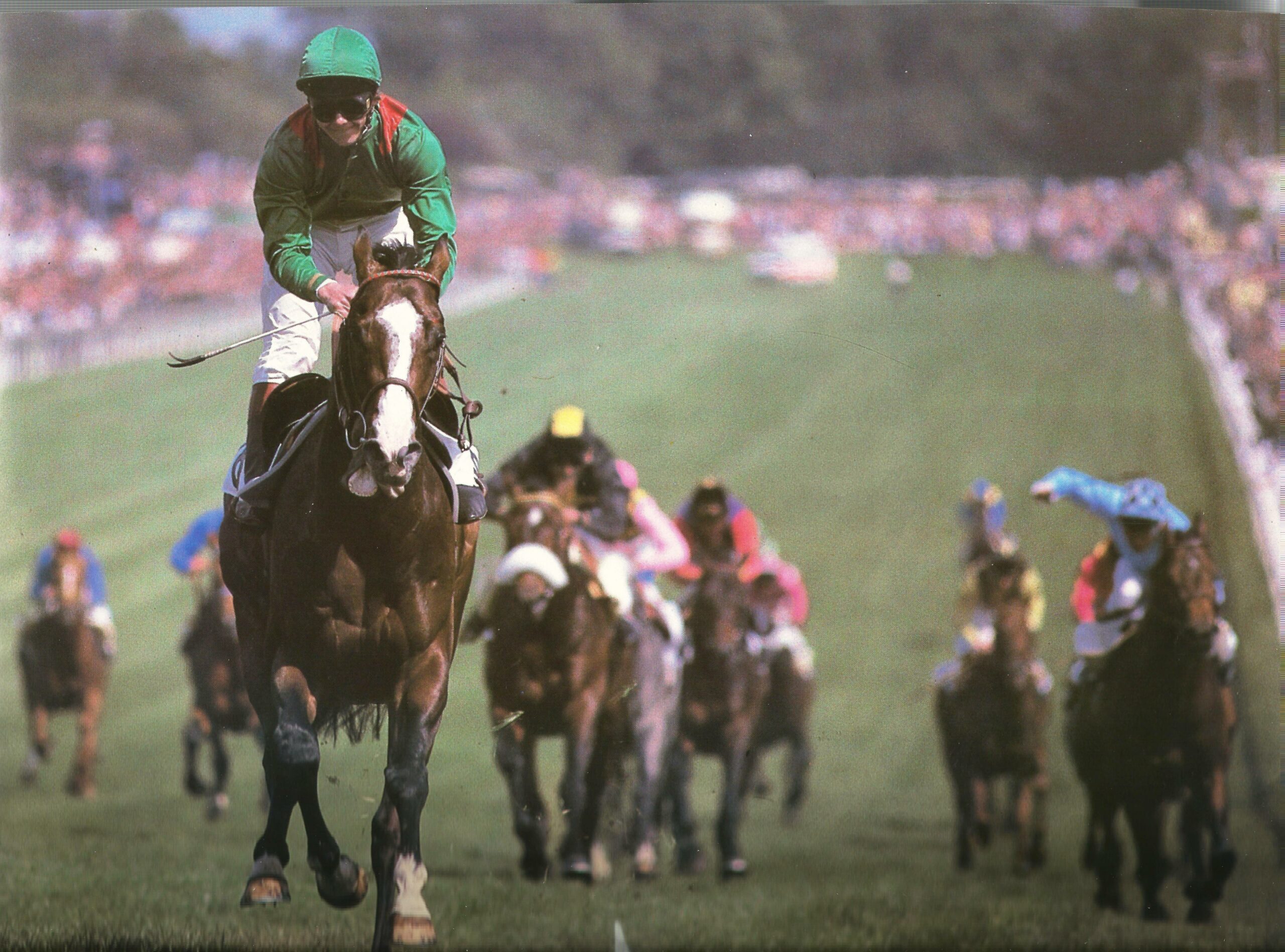
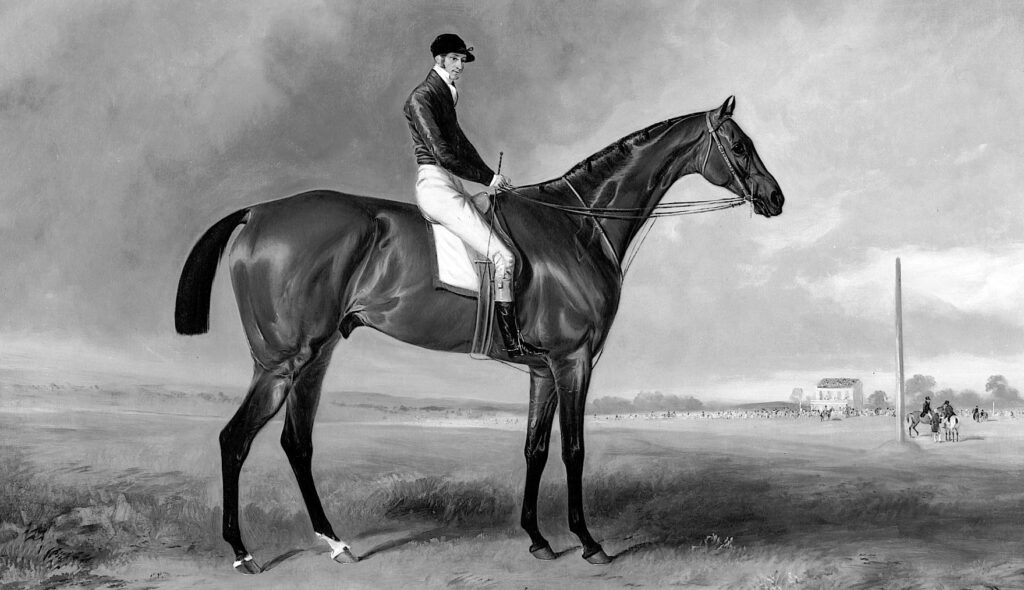
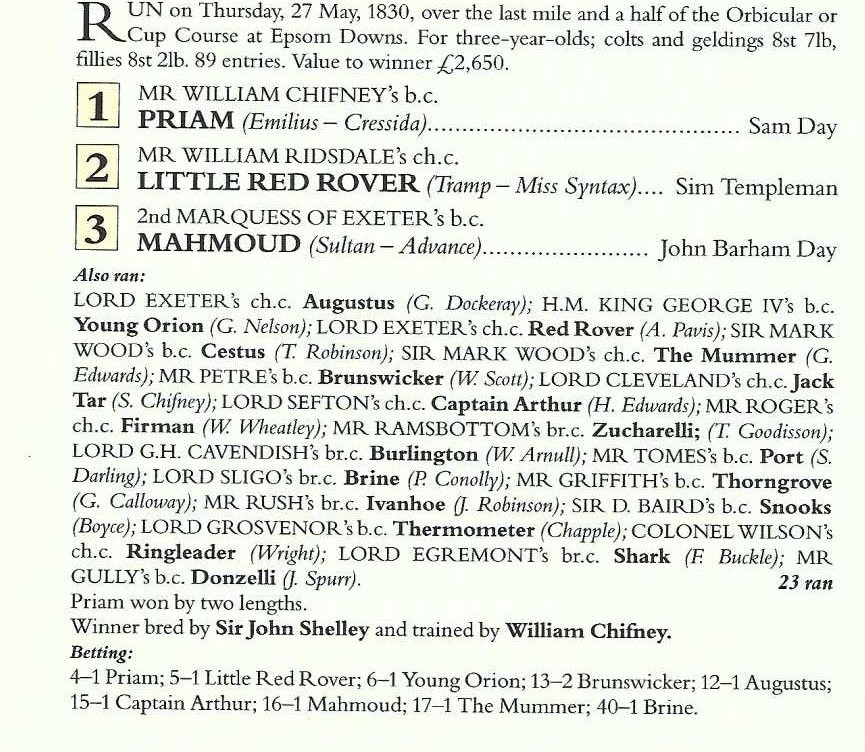
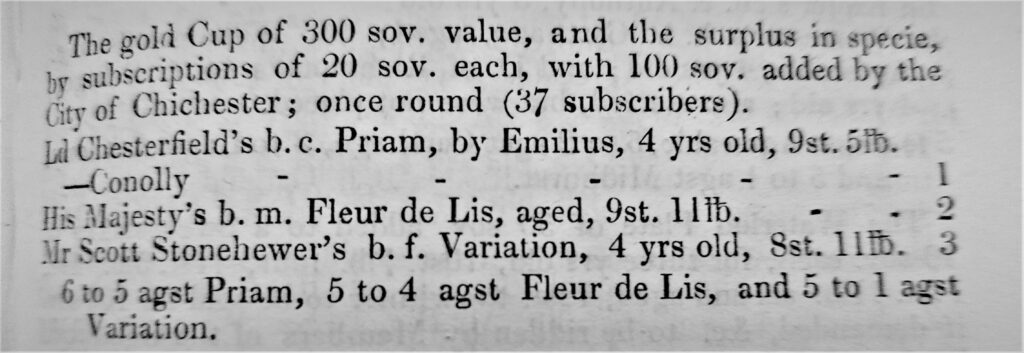
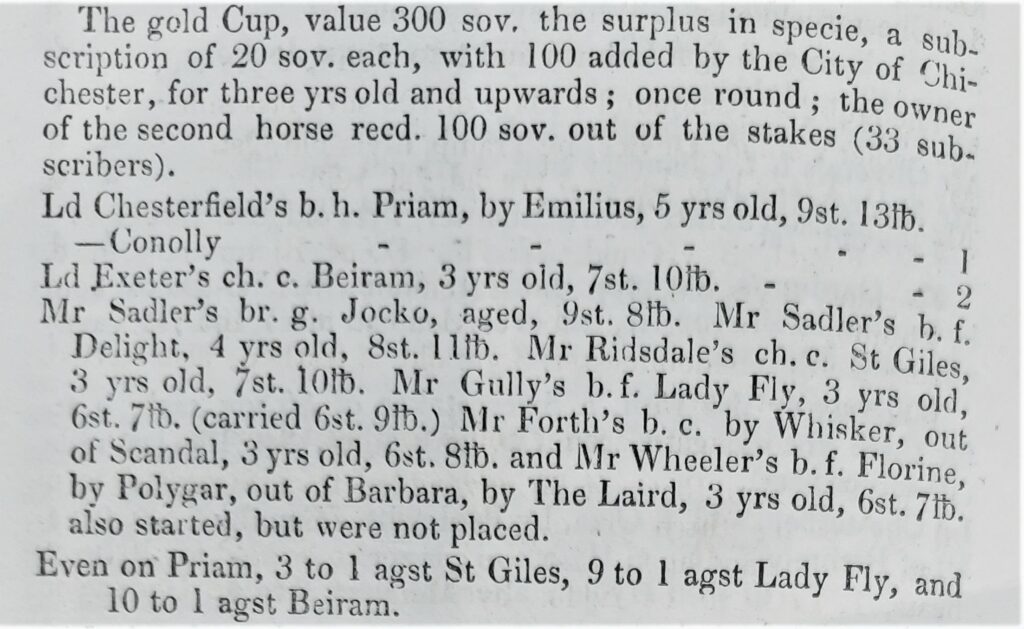
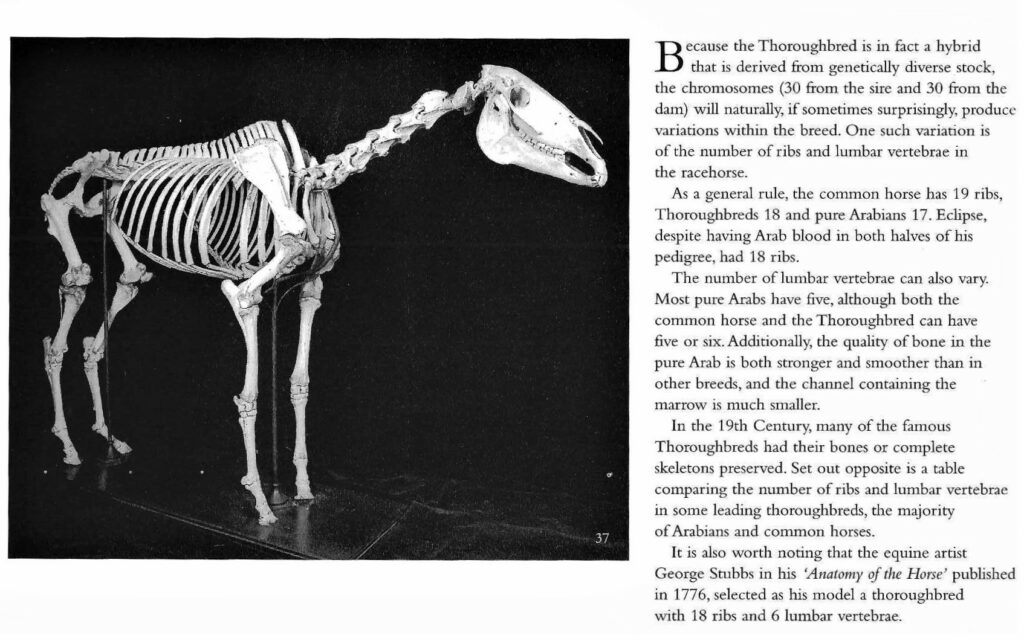
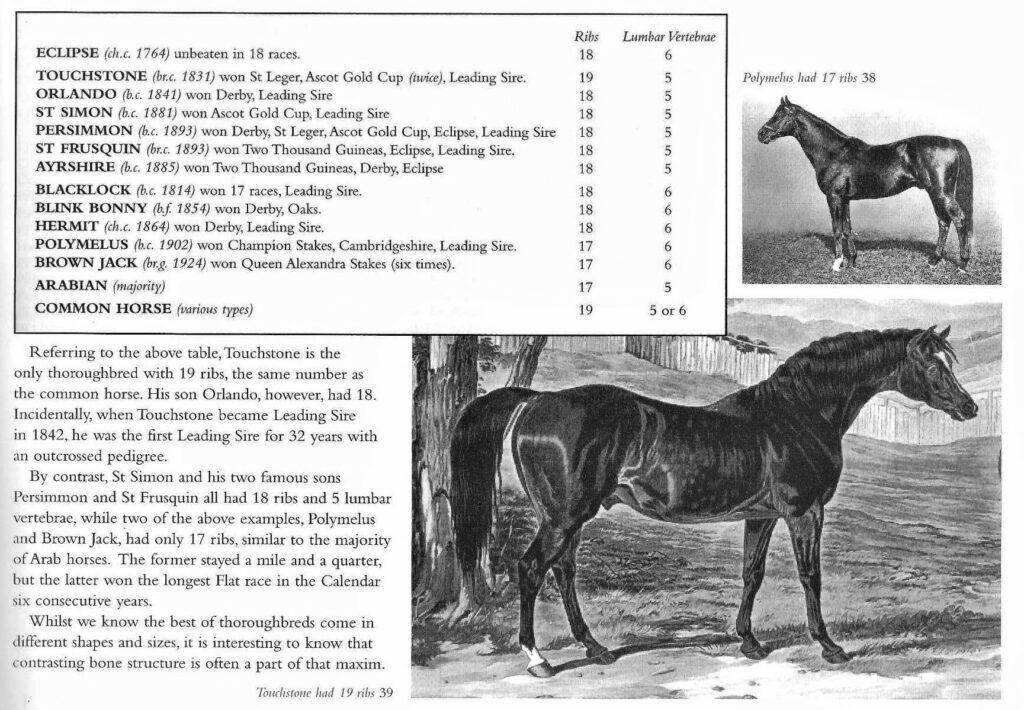
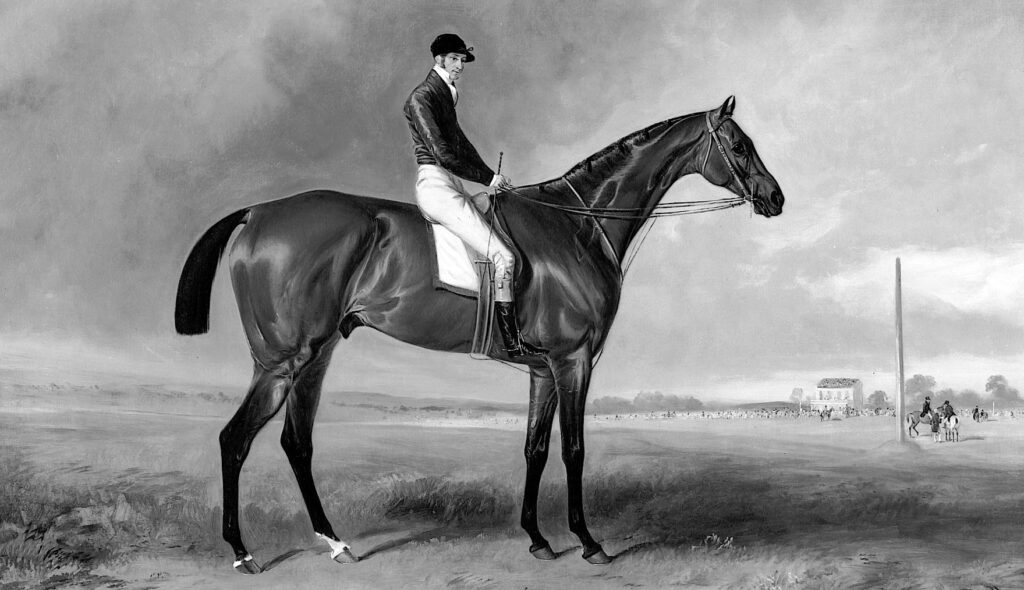
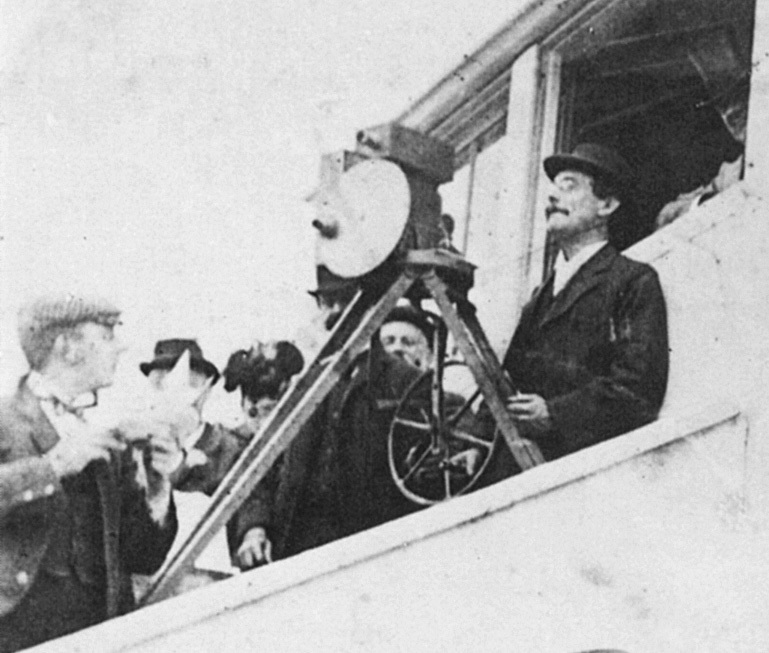
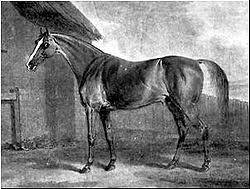 Abingdon that he registered it as such. Later, for everyone’s convenience it was shortened to Pot-8-o’s. As it turned out, he won 30 races, including 28 at Newmarket – an all-time British record for most wins at one course. Pot-8-o’s raced and won to the age of nine, before siring three Derby winners and six of the 13 runners in Waxy’s Derby of 1793.
Abingdon that he registered it as such. Later, for everyone’s convenience it was shortened to Pot-8-o’s. As it turned out, he won 30 races, including 28 at Newmarket – an all-time British record for most wins at one course. Pot-8-o’s raced and won to the age of nine, before siring three Derby winners and six of the 13 runners in Waxy’s Derby of 1793.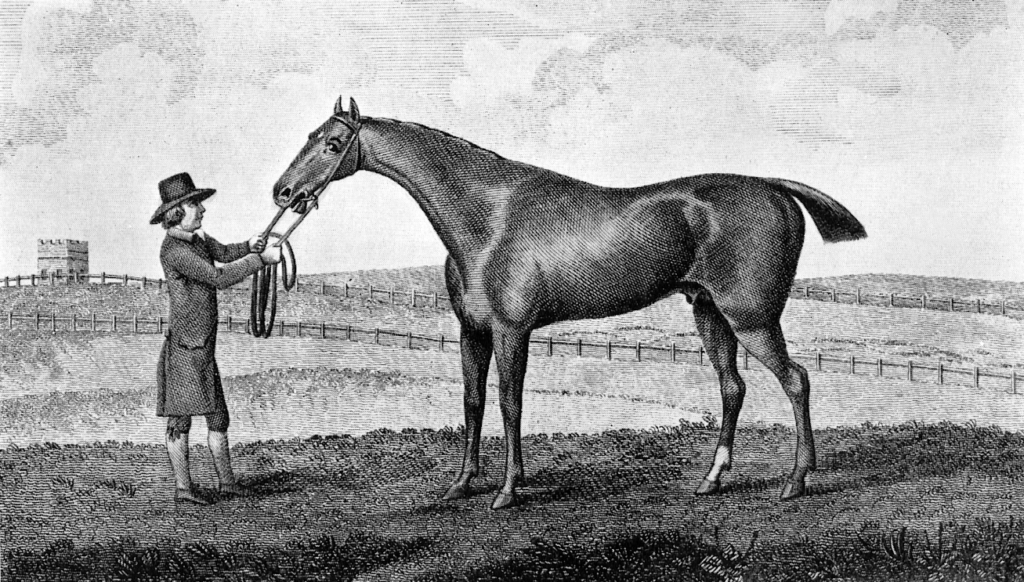 The racing career of Waxy (above) is entwined with that of his arch rival Gohanna (b.c. 1790).
The racing career of Waxy (above) is entwined with that of his arch rival Gohanna (b.c. 1790).